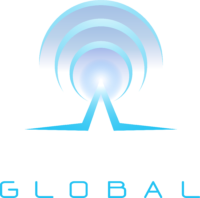Threat intelligence platforms are essential for corporate security teams.
Corporate security teams rely on threat and risk intelligence and vital tip-of-the-spear information from risk analysts. This information helps organizations identify, assess, and manage risks. There are two main types of threat intelligence platforms: traditional threat intelligence and artificial risk intelligence. Both have their strengths and weaknesses, but when used together strategically in an integrated Critical Event Management platform, they create a powerful means for anticipating, identifying, monitoring, and managing threats and risks.
Global Threat Intelligence Services and Traditional Risk Intelligence
Human analysts manually gather traditional risk intelligence. It includes open-source intelligence (OSINT), human intelligence (HUMINT), media analysis, geo-political, and financial analysis. The intelligence community uses surveillance and other tools to evaluate threats against overseas operations. It has been used for years and is a carryover of government tradecraft and is often seen as the more reliable of the two types of risk intelligence because it comes from humans rather than machines.
Benefits of Traditional Threat Intelligence
Human analysts can understand context and intentions in ways that machines cannot. Humans see past surface-level information and identify potential risks that might be hidden or require context that a device may not recognize.
Traditional risk intelligence relies on publicly available information. Therefore, it is less likely to contain errors (pending source verification) or false positives than Artificial Risk Intelligence. Finally, human analysts can often act faster than machines because they don’t need time to process data contextually before making decisions.
Despite the advantages of threat intelligence tools, there are also some limitations with Traditional Risk Intelligence:
- It can be time-consuming and expensive to gather manually.
- Large corporate security teams are a luxury that most organizations can’t justify financially.
- Because it relies on public information, it might not be as comprehensive as you need it to be about a particular risk.
- It often has a human bias – which is challenging to eliminate.
- Finally, human analysts may be unable to keep up with all the data that needs to be processed.
Artificial Risk Intelligence
Artificial Risk Intelligence (A-R-I) is information gathered automatically by machines. It includes social media monitoring, web scraping, and machine learning. Risk and business continuity leaders have embraced these technologies to accelerate risk identification.
There are many benefits of Artificial Risk Intelligence:
- Artificial Risk Intelligence can be used to gather large amounts of data quickly and cheaply.
- Because it uses algorithms rather than humans to process data, it can identify patterns that would be missed by human analysts.
- If properly managed, machine learning improves over time at identifying risks.
- A-R-I can complement traditional intelligence by providing another source of information for analysts to use in their decision-making process.
Machines don’t have all the advantages.
There are many limitations to Artificial Risk Intelligence.
Here are a few:
- A reliance on algorithms instead of humans can sometimes produce false positives or miss important details about a particular risk.
- A-R-I point solutions can be expensive to set up and maintain. These solutions often rely on pre-trained data sources that quickly need to be updated.
Combine Traditional Threat Intelligence Platforms and Artificial Intelligence in a Critical Event Management Platform
Kinetic Global is on a mission to make Critical Event Management integrated, unified, accessible, and intelligent – while keeping the security team in control but driving the shift toward man/machine collaboration.
One way to overcome the limitations of both intelligence-gathering methodologies is to combine them in a threat intelligence software platform (often bundled within a Critical Event Management Platform (CEM) that creates actionable intelligence for crises, emergency, and medical response personnel. The benefits are significant:
- Better protection for employees, property, and brand assets
- Reduced frequency and severity of critical incidents
- Better cost management of response, recovery, and liability.
- Improved business continuity and organizational resilience.
By combining the best of human intuition with the best of artificial risk intelligence, The Kinetic Global Critical Event Management platform enables global security and business continuity officials to take charge of any situation: workplace violence, facility safety, violent crime, geopolitical unrest, kidnap/ransom, lone wolf attacks, weather, and more.
By combining access to data with AI that empowers the security team – our approach to critical event management results in reduced cost of ownership, lower implementation time, and smarter management of incidents.



